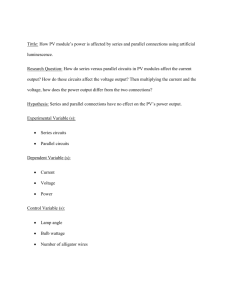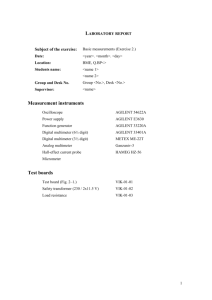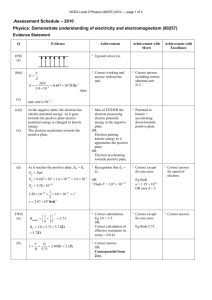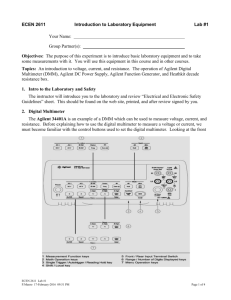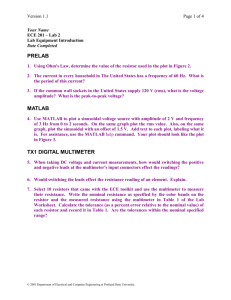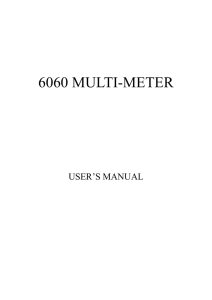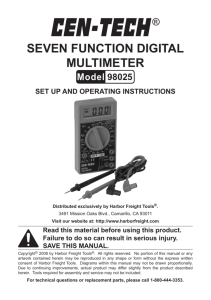Electrical Measurements and Instruments
advertisement
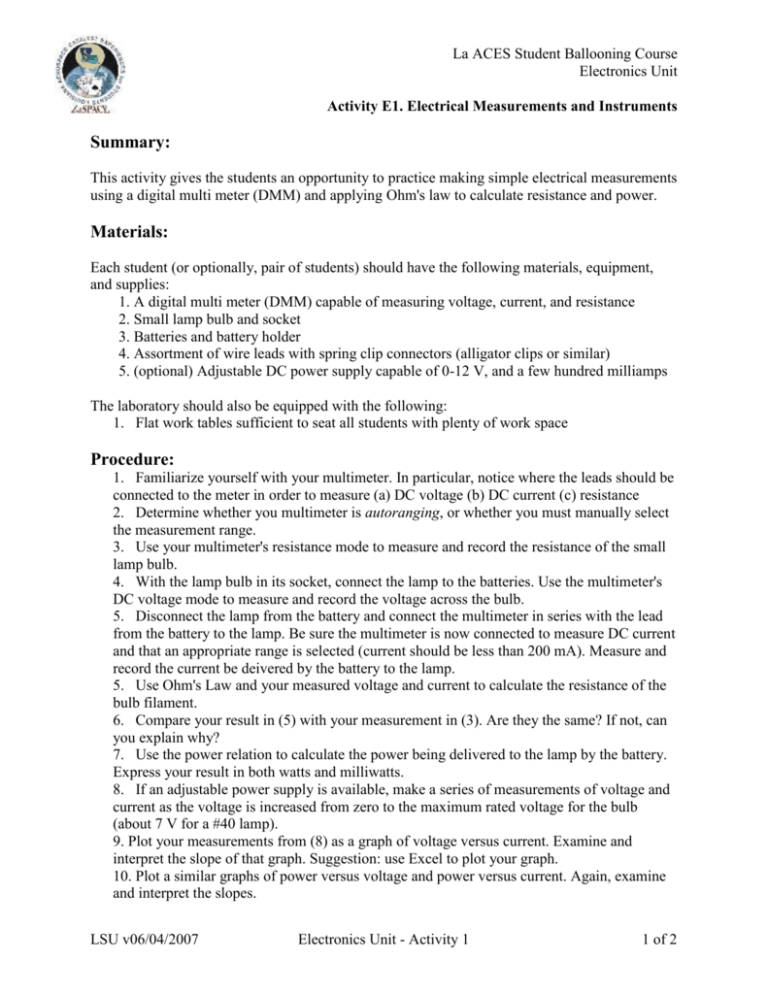
La ACES Student Ballooning Course Electronics Unit Activity E1. Electrical Measurements and Instruments Summary: This activity gives the students an opportunity to practice making simple electrical measurements using a digital multi meter (DMM) and applying Ohm's law to calculate resistance and power. Materials: Each student (or optionally, pair of students) should have the following materials, equipment, and supplies: 1. A digital multi meter (DMM) capable of measuring voltage, current, and resistance 2. Small lamp bulb and socket 3. Batteries and battery holder 4. Assortment of wire leads with spring clip connectors (alligator clips or similar) 5. (optional) Adjustable DC power supply capable of 0-12 V, and a few hundred milliamps The laboratory should also be equipped with the following: 1. Flat work tables sufficient to seat all students with plenty of work space Procedure: 1. Familiarize yourself with your multimeter. In particular, notice where the leads should be connected to the meter in order to measure (a) DC voltage (b) DC current (c) resistance 2. Determine whether you multimeter is autoranging, or whether you must manually select the measurement range. 3. Use your multimeter's resistance mode to measure and record the resistance of the small lamp bulb. 4. With the lamp bulb in its socket, connect the lamp to the batteries. Use the multimeter's DC voltage mode to measure and record the voltage across the bulb. 5. Disconnect the lamp from the battery and connect the multimeter in series with the lead from the battery to the lamp. Be sure the multimeter is now connected to measure DC current and that an appropriate range is selected (current should be less than 200 mA). Measure and record the current be deivered by the battery to the lamp. 5. Use Ohm's Law and your measured voltage and current to calculate the resistance of the bulb filament. 6. Compare your result in (5) with your measurement in (3). Are they the same? If not, can you explain why? 7. Use the power relation to calculate the power being delivered to the lamp by the battery. Express your result in both watts and milliwatts. 8. If an adjustable power supply is available, make a series of measurements of voltage and current as the voltage is increased from zero to the maximum rated voltage for the bulb (about 7 V for a #40 lamp). 9. Plot your measurements from (8) as a graph of voltage versus current. Examine and interpret the slope of that graph. Suggestion: use Excel to plot your graph. 10. Plot a similar graphs of power versus voltage and power versus current. Again, examine and interpret the slopes. LSU v06/04/2007 Electronics Unit - Activity 1 1 of 2 La ACES Student Ballooning Course Electronics Unit Activity E1. Electrical Measurements and Instruments Expected Outcomes: Students should learn how to connect and use a multimeter to measure DC voltage and current as well as resistance. They should discover that the resistance of the lamp when measured in isolation is much smaller than the calculated resistance when the lamp is illuminated. They should understand the resistance of the lamp filament depends on its temperature Issues: With a multimeter, resistance of a component must be measured when the component is isolated (not connected to any other circuit elements or power sources) Voltage measurements require the multimeter to be connected in parallel with the component whose voltage is being measured, while current measurements require the multimeter to be in series with the component. If auto ranging meters are not used, students should be instructed to begin with a high range and change to a lowewr range as necessary to improve resolution. While most digital multimeters are practically immune to damage from overrange inputs, analog instruments are not immune. References: none required LSU v06/04/2007 Electronics Unit - Activity 1 2 of 2
